Showing 101–110 of 125 results

The work it two volumes explores the physical and emotional interaction between Siva and Parvati as represented in sculptural works in the Indian subcontinent and examines a host of images supported by classifications of Siva-Parvati figures in texts like the Saiva Agamas and iconographic studies of the past decades. The images are related not only to religious beliefs but also iconographical.
The work explores the physical and emotional interaction between Shiva and Parvati as represented in sculptural works in the Indian subcontinent. In two volumes, it examines a host of images supported by classifications of Shiva-Parvati figures in texts like the Shaiva âgamas and iconographic studies of the past decades. It surveys an astounding sculptural diversity of Shiva-Parvati icons particularly forms of seated or standing Umasahita-murti, standing Alingana murti and Tantric forms of the deities. The images are related not only to religious beliefs but also iconographical research for instance, linking depiction of figures in certain postures and areas to their places of origin. With numerous charts, it highlights iconographical peculiarities, distribution and popularity, and identifies similarities and differences over periods of time and areas of making. Referring to sculptural collections in museums and private acquisitions, the painstaking research examines the sculptor’s technique of combining aesthetic harmony and beauty with the sacred in ontological symbols as of Umamaheshvara. There is a detailed mythological background concentrating on the individual character of Shiva and Parvati in their mutual relationship; their marriage and conjugal life; explicitly Shaiva motifs where the major concern is with the all-important Lord Shiva; and the physical and emotional interaction of Shiva and Parvati as man and wife. An entire volume is devoted to reproduction of the rich representative sculpture studied through more than 570 black and white photographs and over 160 colour plates. The volumes will prove useful for scholars of Indological art and art connoisseurs as well as general readers.
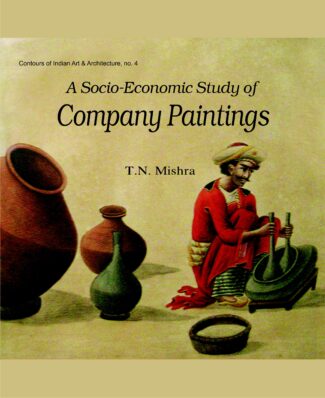
This book describes the social and economic condition of India as shown in the Company paintings during the British rule. It also sheds light on the techniques adopted by the artists in depicting the various themes in paintings.
The paintings of the eighteenth and nineteenth centuries are recognised as a valuable source for the study of social and economic life during the colonial period. A deep study of the Company paintings of the time is significant because the paintings have carefully observed and recorded the Indian scene in all its aspects, particularly its history and society.
The book discusses the evolution of the Company School of Art, as a result of interactions between traditional Indian paintings and European paintings, and its spread to most of the art centres in India. In a thorough attempt, it deals with its thematic preoccupations and the common features of the paintings: their favourite subjects, especially their depiction of the professions, and the variety of common people they carefully depict. It examines the techniques adopted by the artists: their choice of mediums and colours and their style of depicting the themes. It also takes up the social status of the artists at the time.
The book will fascinate lovers of Indian art and will prove useful to scholars and students especially involved in study of evolution of Indian art and modern art.
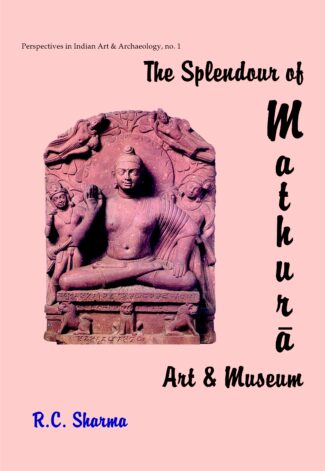
The book presents various stages of development of Mathura art from its earliest times and, in the process, gives a valuable account of the archaeological explorations and expeditions in the region since 1836.
It is a treasure document enlightening the various stages of development of Mathura art from its earliest times. Introducing the socio-cultural background from the pre-historic times it furnishes a valuable account of the archaeological explorations and expeditions in the region since the first antiquity saw the light of the day in 1836. Indigenous by birth, the Mathura School of Art flourished on the banks of Yamuna, reached its pinnacle under the Kushana patronage, continued in the Gupta age followed by Medieval times, thus dominating the entire Northern India for more than five centuries leaving behind imprints to be followed by the succeeding art styles. The type of stone and style changed with time and it did get influenced by its contemporary School of Gandhara once, but its exclusiveness remained down the ages. Beside the analytical assessment of the folk art tradition of early terracottas and yaksha cult, Dr. Sharma brings to light for the first time the salient features of the evolution and development of Mathura sculptures on various themes including Jaina, Buddhist and Brahmanical. The book is an uptodate document of new researches, fresh arrivals and latest reorganisation of the Museums galleries. The coloured and black & white illustrations in this book speak of the display of rich Mathura art in the Museum. The Index to the Exhibits will facilitate in spotting the description of a specific object quickly. Important sites have been located on the City and District maps and situation of galleries and ancillary units of the Museum can be found on the Gallery Plan. While the visitors will find the book a very remunerative companion during the Museum round the scholars will equally be benefitted through the prolific research material it reveals.
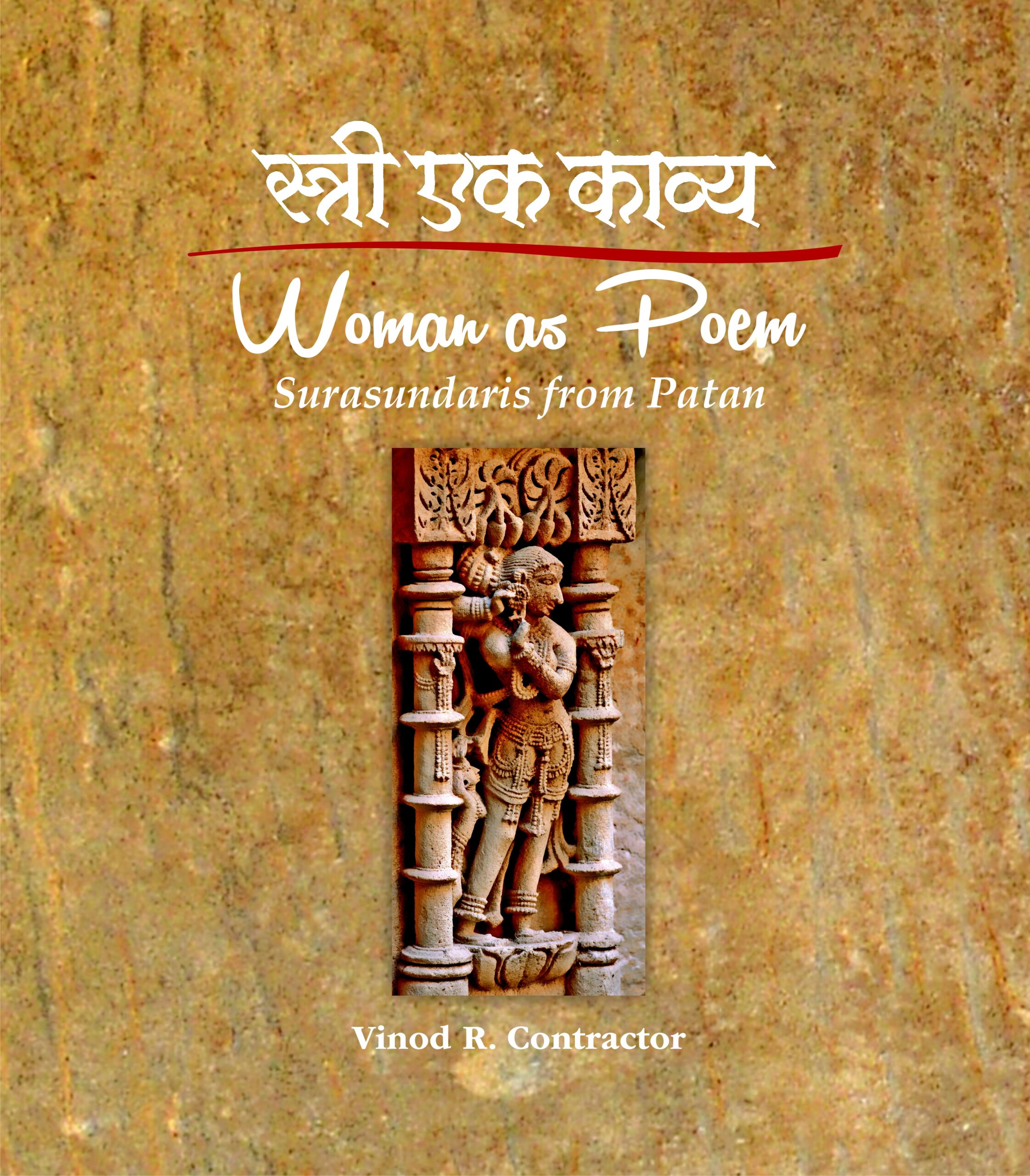
Surasundaris on the walls of Rani-ki-Vav remind us that sensuality is the doorway to spirituality, that growth and fertility are as important as piety and devotion. The stepwell in Patan is perhaps the most admired structure of its kind and is a testament to the imagination and skill of the sthapati.
Surasundaris on the walls of Rani-ki-Vav remind us that sensuality is the doorway to spirituality, that growth and fertility are as important as piety and devotion, that even before we undertake dhyana of the deity in the sanctum or in different parts of the vav we must saturate our mind with the beautiful so that we can attain the state of serenity and purnatva.
Sensually evocative, beautiful from tresses to the toes, with eyes downcast, surasundaris are an expression of unsurpassed grace. They are a reminder that a woman is the most adorned expression of prakriti, that to indulge in it is to affirm our senses and enrich our mind, but the aesthetic journey does not stop there. The contemplative viewer will see the surasundari as a poem and a song, where every limb and every gesture are the lyrics, the texture of the stone is the rhythm, where metaphor is the key that will unlock the many meanings and suggestions.
The stepwell in Patan is perhaps the most admired structure of its kind and is a testament to the imagination and skill of the sthapati and as we walk through its many-tiered pavilion we almost hear the hushed voices of the queen and her retinue that stayed there away from menacing eyes and sweltering heat. Come, tread softly, as you are entering a hallowed space of beauty.
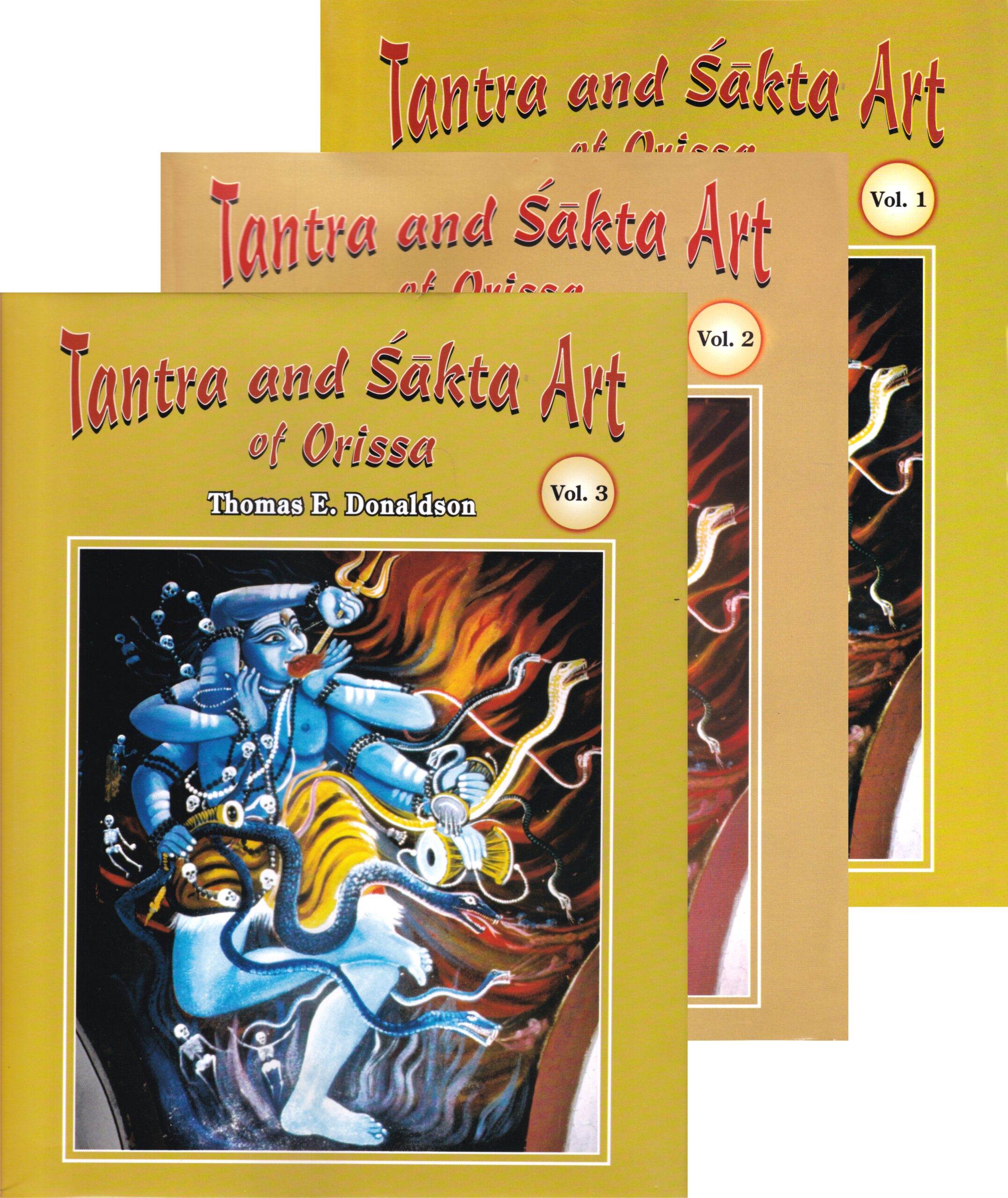
Here Prof. Donaldson presents a rich and variegated picture of the sakta/tantra art of Orissa, highlighting the evolving iconography of individual images. He focuses on different forms and depictions of the Goddess as Sakti, painstakingly analysing the architecture of a number of temples and their images.
The emergence of Tantrism and Shaktism in the sixth-seventh centuries in ancient India symbolised a belief in fertility worship, worship of the female principle with the Devi/Goddess supreme as the Energy/Power the substance of everything, pervading everything. In Orissa in particular, the shakta/tantra cults played a major role in the religion and culture of the region and this is testified by its many temples and sculptural wonders therein. In this work, Prof. Donaldson presents a rich and variegated picture of the shakta/tantra art of Orissa, highlighting the evolving iconography of individual images. Based on largely first-hand study of the temples and their iconography and also referring to various textual sources, he deals with, in detail, the shakta mythology of the region along with its depiction in iconography. He focuses on different forms and depictions of the Goddess the Matrikas, Camunda, Naga/Nagi, Manasha/Jaratkuriu, Tara, the Mahavidyas, the Yoginis and Dakinis and images of Purusha/Prakriti, Agni/Soma and Linga/Yoni, Painstakingly analysing the architecture of a number of temples and their images. The work abounds in photographs (more than seven hundred) revealing the variety of forms of the Goddess and their widespread distribution and provides many maps, diagrams and iconographical charts as well. A thorough research giving attention to minute details even while studying a wide range of iconographical traditions and forms, this work will prove an indispensable source book for young as well as established scholars.
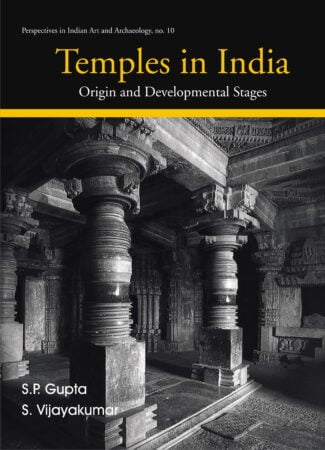
This volume studies the beginning and evolution of temple architecture in India and deals with temples constructed by different ancient and medieval dynasties in various parts of the country. It contains over a hundred plates of temples and carvings on them, cave faades, pillar descriptions, etc. Many Jaina temples are also covered.
This volume is a study of the beginning and evolution of temple architecture in India which covers sculptures and carvings as well. With over a hundred plates of temples and carvings on them, including cave facades and pillar depictions, it deals with temples constructed by the different ancient and medieval dynasties in Indian history, particularly the Early Western Calukyan and Later Western Calukyans, Pallava, Pandya, Cola, Hoyasala and Nayaka. With illustrations that include maps, plans of caves and even viharas and caityas, it undertakes a study of the temples found in different States of India. The research discusses the variations in plans and elevations to examine development of temple architecture over time and new experimentations in the building of temples by use of various materials. Reconstructing art and architectural styles from the remnants of the ruined temples in many places, it explains terms and concepts in temple building and architecture and cites examples of various temple styles and traditions including the best and the earliest ones. The focus is on the Dravida and Nagara temple styles and a third hybrid form of ÷ikhara that developed in the Deccan. Many Jaina temples are also covered. The book will prove extremely useful for scholars and students of Indology, particularly those studying Indian religious architecture.

This volume studies the beginning and evolution of temple architecture in India and deals with temples constructed by different ancient and medieval dynasties in various parts of the country. It contains over a hundred plates of temples and carvings on them, cave faades, pillar descriptions, etc. Many Jaina temples are also covered.
This volume is a study of the beginning and evolution of temple architecture in India which covers sculptures and carvings as well. With over a hundred plates of temples and carvings on them, including cave facades and pillar depictions, it deals with temples constructed by the different ancient and medieval dynasties in Indian history, particularly the Early Western Calukyan and Later Western Calukyans, Pallava, Pandya, Cola, Hoyasala and Nayaka. With illustrations that include maps, plans of caves and even viharas and caityas, it undertakes a study of the temples found in different States of India. The research discusses the variations in plans and elevations to examine development of temple architecture over time and new experimentations in the building of temples by use of various materials. Reconstructing art and architectural styles from the remnants of the ruined temples in many places, it explains terms and concepts in temple building and architecture and cites examples of various temple styles and traditions including the best and the earliest ones. The focus is on the Dravida and Nagara temple styles and a third hybrid form of ÷ikhara that developed in the Deccan. Many Jaina temples are also covered. The book will prove extremely useful for scholars and students of Indology, particularly those studying Indian religious architecture.
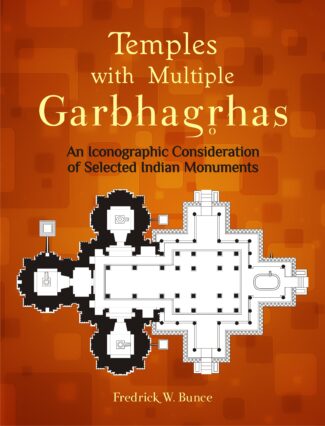
This volume identifies and presents over one-hundred temples having more than one garbhagrha, categorized as dvikuta, trikuta, catuskuta, pancakuta, saptakuta, navakuta and caunsath. It features the temples in detail: their historical milieu, their iconography and the application of mandala(s) to their plans.
Hindu temples are raised to their deities. They are a means to acknowledge the deity and to enshrine his/her images. People honour and worship the deity. Within the Hindu pantheon, there is an array of divinities spread over three major sects Þ Vaisnava, Saiva and Sakta. All these sects have stemmed from the Vedic teachings and beliefs. Normally a temple is devoted to a single diety, having a solitary sanctum (garbhagrha), called ekakuta. In this volume, the author, through his serious research, has made a sincere attempt to identify, present and feature about one hundred temples with multiple garbhagrhas which are categorized as dvikuta, trikuta, catuskuta, pancakuta, saptakuta, navakuta and caunsath yogini temple.
This book delves deep into the details of these temples: their historical milieu, their iconography, the application of mandala(s) to their plans and so on. It also attempts to correct those errors crept in the earlier studies of other researchers in understanding and detailing a few multiple garbhagrhas. The author has given a brief description of such temples and has made a sincere effort to provide a relatively precise scale rendering of those temples, in a size and format, commensurate with their importance.
This volume can serve architects, temple planners, researchers, vastu experts and even historians as a sourcebook on temples with multiple garbhagrhas.
This coffee table book on contemporary art unravels the artistic journey of a talented artist in Naina Dalal, covering a span of fifty-nine years, mainly in the printmaking activities. It showcases her flight as a painter in thinking, perceiving, imagining, creatively objectifying and expressing her artistic acumen through the medium of printmaking processes, her lifetime quest. The book traces the stages through which this versatile artist matured traversing the different realms as a painter, lithographer, etcher and a calligraphy artist.
Further, this monograph is an embodiment of her several decades of artistic wisdom, maturity and thematic range. The images herein deliberate on many a political, social and ethical challenge that infects the society. Along with some shade of feminism, one also comes across her passion in reflecting the true conditions of humanity. These paintings should stir the consciousness of artists, connoisseurs and critics alike.r

This book is a journey into that charmed and beautiful mind from which has arisen concepts and ideas, forms and textures, words and music, movement and stillness, philosophy and worship. myths and their celebrations.
It is through the Indian aesthetic mind and its concepts of the beautiful that the Indian civilization can be best understood, for in that mind are pages of history and voices of the past, in it will be heard the sounds of our dancers and in it will be seen the colours of our fabrics, it is a mind which treasures the aroma of the earth for in it we shall find terracotta figures that will whisper stories of times gone by. In that ancient mind silent stones will speak of sthapatis who not only built temples but also havelis, in that very mind rivers will whisper of saints who meditated on its banks and also of mountains which will beckon us to caves where truth was discovered, in that pristine mind stars will talk to us of astronomers who counted them, in that radiant mind we will meet scribes who created beautiful manuscripts and painters who immortalised our gathas and kathas through their kalam.
This book is a journey into that charmed and beautiful mind from which has arisen concepts and ideas, forms and textures, words and music, movement and stillness, philosophy and worship. myths and their celebrations.
The book is lavishly illustrated and is a visual delight.
| There are no products |